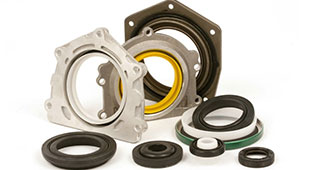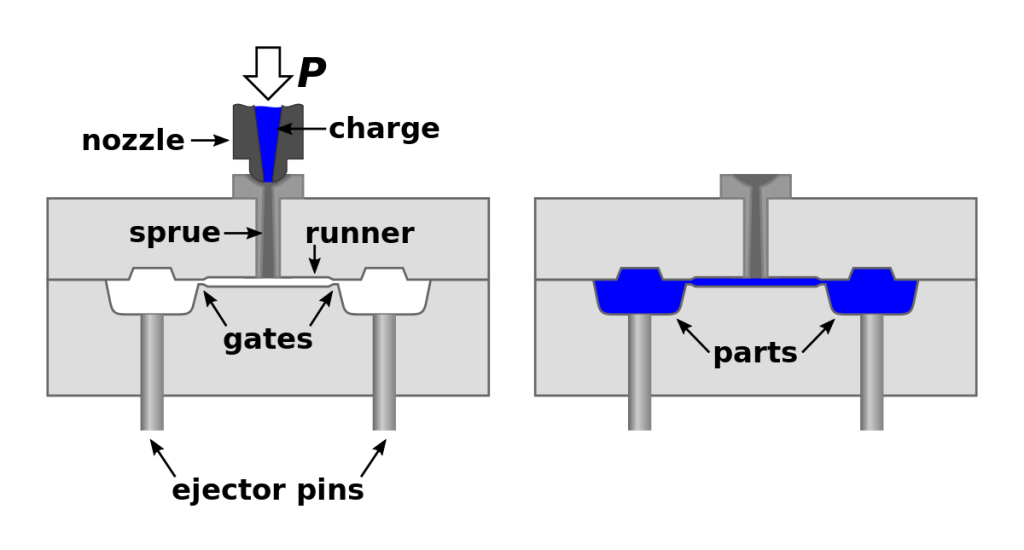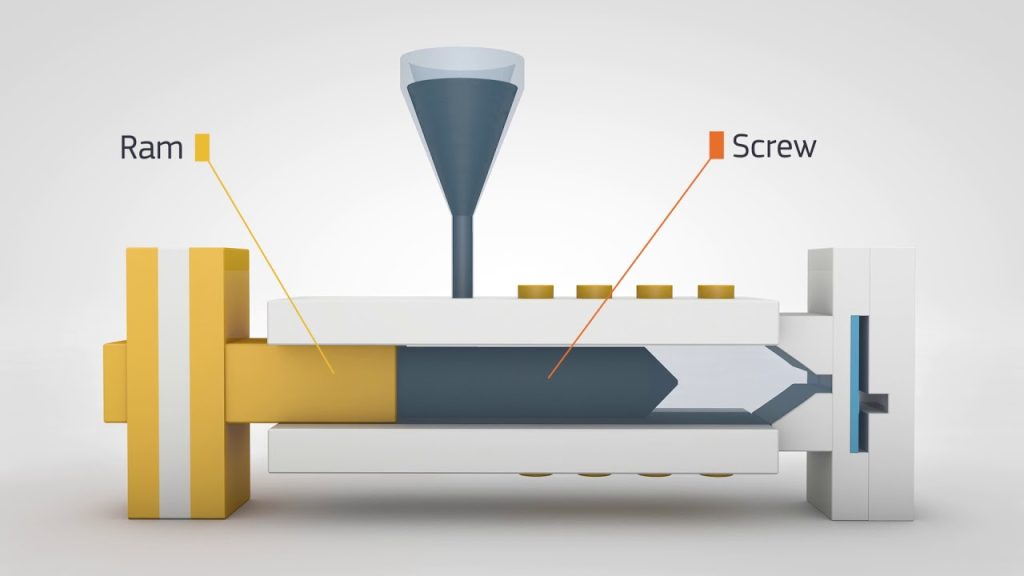Table of Contents
PTFE, also known as Teflon, is a synthetic polymer with exceptional properties such as non-stick, non-reactive, and high-temperature resistance. It’s commonly used in various applications like cookware, medical devices, and electrical insulation. However, one question that has been bothering many is whether PTFE can be injection molded.
Injection molding is a manufacturing process where molten material is injected into a mold, cooled, and solidified to produce a 3D object. While PTFE is known for its unique properties, injection molding it has always been a challenge due to its high melt viscosity and poor flow properties. In this article, we will delve deeper into the subject and explore the feasibility of PTFE injection molding.
Yes, PTFE (Polytetrafluoroethylene) can be injection molded, but it requires specialized equipment and experienced operators. PTFE has a high melting point and low thermal conductivity, making it difficult to mold. However, with the use of specialized molding techniques and equipment, it is possible to mold PTFE into complex shapes and sizes. It is important to work with a reputable manufacturer who has experience in molding PTFE to ensure a high-quality end product.
Can PTFE Be Injection Molded?
If you’re in the manufacturing industry, you may be wondering if PTFE (Polytetrafluoroethylene) can be injection molded. PTFE is a popular material used in various applications, such as coatings, non-stick cookware, and medical devices. Injection molding is a common manufacturing process used to produce plastic parts. In this article, we’ll explore whether PTFE can be injection molded and the considerations to keep in mind.
The Basics of Injection Molding
Injection molding is a manufacturing process that involves melting plastic pellets and injecting them into a mold. The mold is then cooled, and the plastic part is ejected from the mold. Injection molding is a popular process because it can produce high volumes of complex parts with tight tolerances. The process is also highly automated, reducing labor costs and increasing efficiency. However, not all materials can be injection molded.
The Challenge of Injection Molding PTFE
PTFE is a challenging material to injection mold because it has a high melting temperature and is highly viscous when melted. PTFE also tends to stick to metal surfaces, making it difficult to release from the mold. Additionally, PTFE has poor flow properties, which can result in incomplete filling of the mold cavities.
To overcome these challenges, specialized equipment and techniques are required. For example, injection molding machines that can reach high temperatures are necessary to melt the PTFE. Mold release agents are also used to prevent the PTFE from sticking to the mold. Additionally, the mold design must take into account the poor flow properties of PTFE to ensure complete filling of the cavities.
The Benefits of Injection Molding PTFE
Despite the challenges, injection molding PTFE has several benefits. One of the main benefits is that it allows for the production of high volumes of parts with consistent quality. Injection molding also allows for the production of complex geometries that would be difficult or impossible to produce with other manufacturing processes. Additionally, injection molding can be a cost-effective solution for producing PTFE parts in large quantities.
PTFE vs. Other Materials in Injection Molding
When it comes to injection molding, PTFE has some advantages and disadvantages compared to other materials. For example, PTFE has a high melting temperature, which can make it more challenging to process than other materials. However, PTFE has excellent chemical resistance and can withstand high temperatures, making it suitable for applications that require these properties.
Other materials commonly used in injection molding include polypropylene, polystyrene, and polyethylene. These materials are generally easier to process than PTFE and are less expensive. However, they may not have the same chemical resistance or high-temperature performance as PTFE.
Applications of Injection Molded PTFE
PTFE is used in a wide range of applications, from industrial to medical. Injection molding is one of the methods used to produce PTFE parts for these applications. Some common applications of injection molded PTFE include:
– Seals and gaskets
– Bearings
– Electrical components
– Medical devices
Conclusion
In summary, PTFE can be injection molded, but it requires specialized equipment and techniques. The challenges of injection molding PTFE include its high melting temperature, poor flow properties, and tendency to stick to metal surfaces. However, the benefits of injection molding PTFE include the ability to produce high volumes of parts with consistent quality and the ability to produce complex geometries. When compared to other materials commonly used in injection molding, PTFE has unique properties that make it suitable for specific applications.
Frequently Asked Questions
PTFE, or polytetrafluoroethylene, is a commonly used material in various industries, including aerospace, medical, and automotive. One of the most common methods of producing PTFE parts is through injection molding. Here are some common questions and answers related to the injection molding of PTFE.
Can PTFE be injection molded?
Yes, PTFE can be injection molded, although the process requires specific considerations due to the unique properties of the material. PTFE is a thermoplastic material that is highly resistant to heat and chemicals, making it an ideal choice for many applications.
The injection molding process for PTFE involves heating the material to a specific temperature and then injecting it into a mold under high pressure. One of the challenges of injection molding PTFE is that it has a high melt viscosity, which can make it difficult to flow into the mold. This requires careful attention to the injection pressure and mold design.
What are the benefits of injection molding PTFE?
Injection molding PTFE offers several benefits, including high precision and repeatability. It also allows for the production of complex shapes and parts with tight tolerances. Additionally, injection molding can be used to produce large quantities of parts in a relatively short amount of time, making it a cost-effective option for many applications.
Another benefit of injection molding PTFE is that it allows for the creation of parts with uniform properties throughout the part. This is because the material is melted and mixed thoroughly before being injection molded, ensuring consistent material properties throughout the part.
What types of products are commonly injection molded using PTFE?
PTFE is used to produce a wide variety of products through injection molding, including seals, gaskets, bushings, and bearings. These products are commonly used in industries such as aerospace, medical, and automotive, where high performance and reliability are critical.
Because of its unique properties, PTFE is also used to produce parts that are exposed to harsh environments, such as high temperatures or corrosive chemicals. In these applications, injection molding PTFE can provide superior performance compared to other materials.
What are the limitations of injection molding PTFE?
While injection molding PTFE offers many benefits, there are also some limitations to the process. One of the biggest challenges is the high melt viscosity of PTFE, which can make it difficult to fill the mold completely. This can result in parts with voids or other defects.
Another limitation of injection molding PTFE is that the material is prone to warping and shrinking during the cooling process. This can be mitigated by careful mold design and process control, but it is still a consideration when working with PTFE.
What should I consider when choosing an injection molding supplier for PTFE parts?
When choosing an injection molding supplier for PTFE parts, there are several factors to consider. First, look for a supplier with experience and expertise in working with PTFE. This will ensure that they are familiar with the unique properties of the material and can produce high-quality parts.
You should also consider the supplier’s capabilities, including their equipment and facilities. Look for a supplier with modern, well-maintained equipment and a clean, organized facility. Finally, consider the supplier’s track record of quality and reliability, as well as their responsiveness and customer service.
In conclusion, injection molding is a viable option for producing PTFE parts. Despite the challenges posed by the material’s high melting point and low viscosity, advancements in technology have made it possible to overcome these obstacles. With the right equipment and expertise, manufacturers can create high-quality PTFE parts using injection molding techniques.
One of the main advantages of injection molding PTFE is its cost-effectiveness. While other manufacturing methods may be more expensive, injection molding allows for mass production of parts at a lower cost. Additionally, the process is highly efficient, producing less waste and reducing the need for secondary operations.
Overall, injection molding is a reliable and efficient method for producing PTFE parts. With its cost-effectiveness and ability to produce high-quality parts, it is a popular choice among manufacturers. As technology continues to advance, we can expect to see even more improvements in the injection molding process for PTFE.
Request a quote today!
[contact-form-7 id="1578" title="Contact form"]
Please compress the file into a ZIP or RAR file before uploading. Alternatively, send through your RFQ by email.
enquires@unitymanufacture.com





